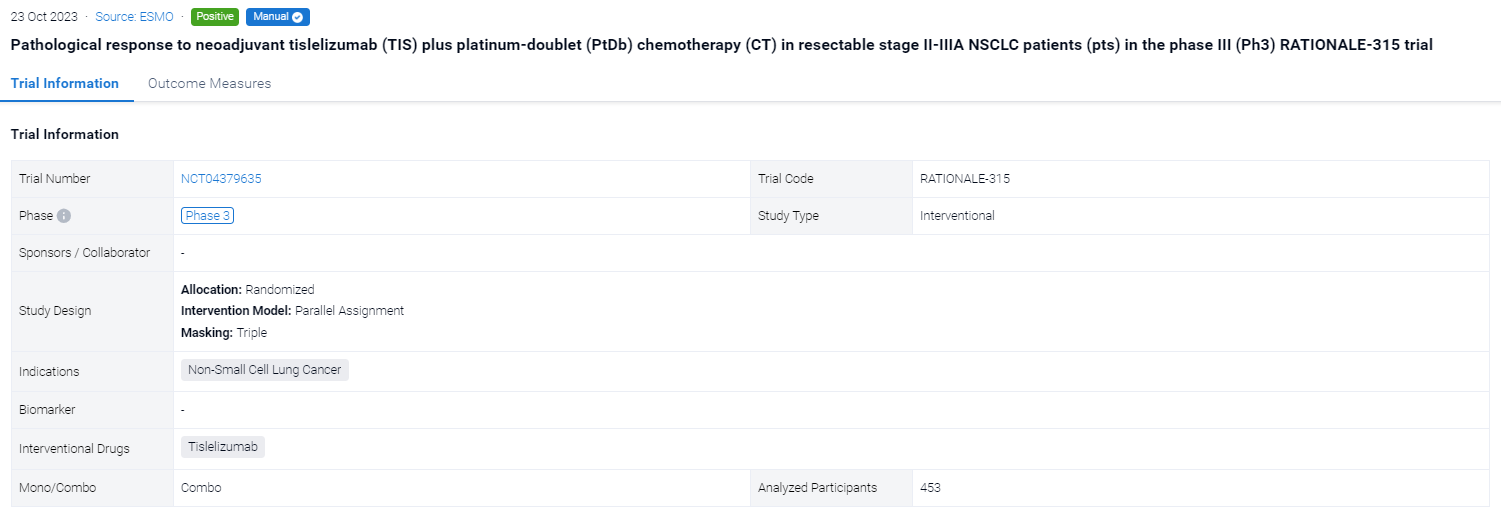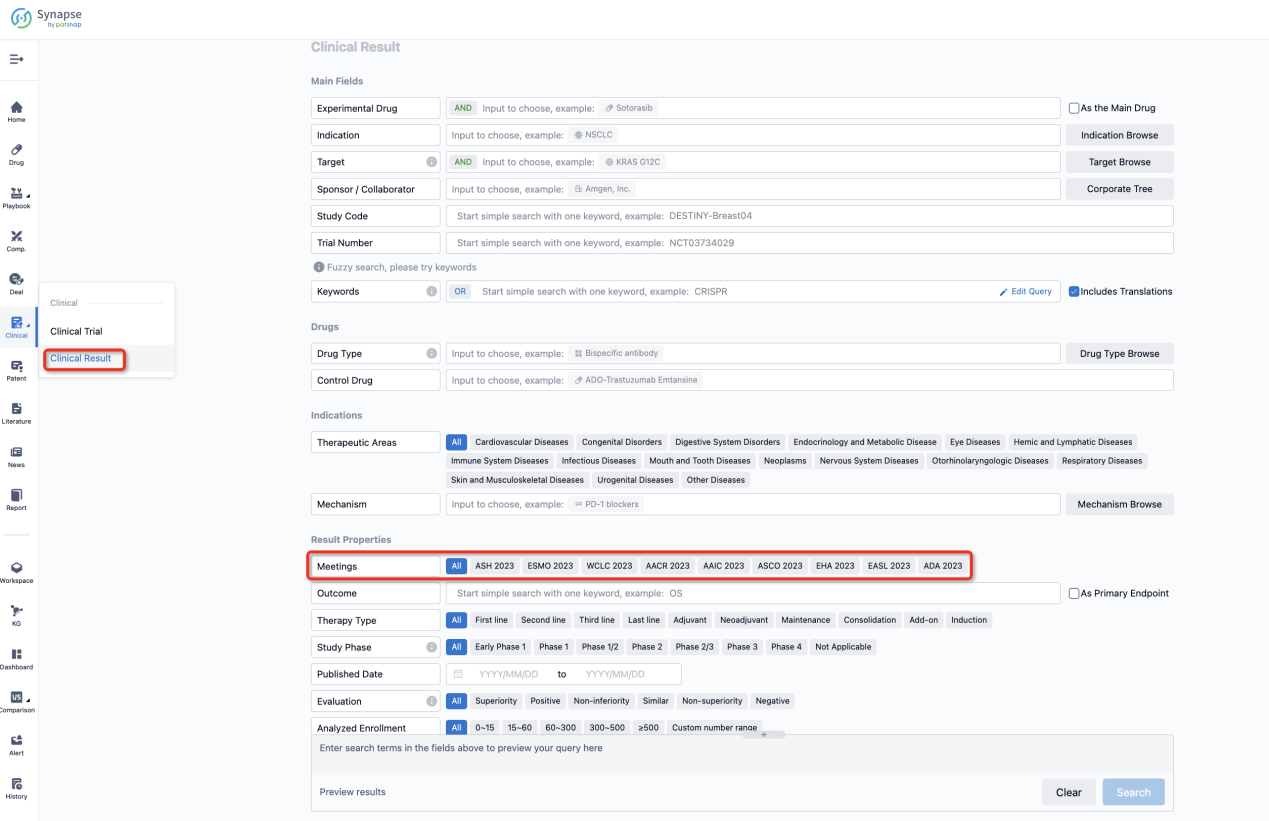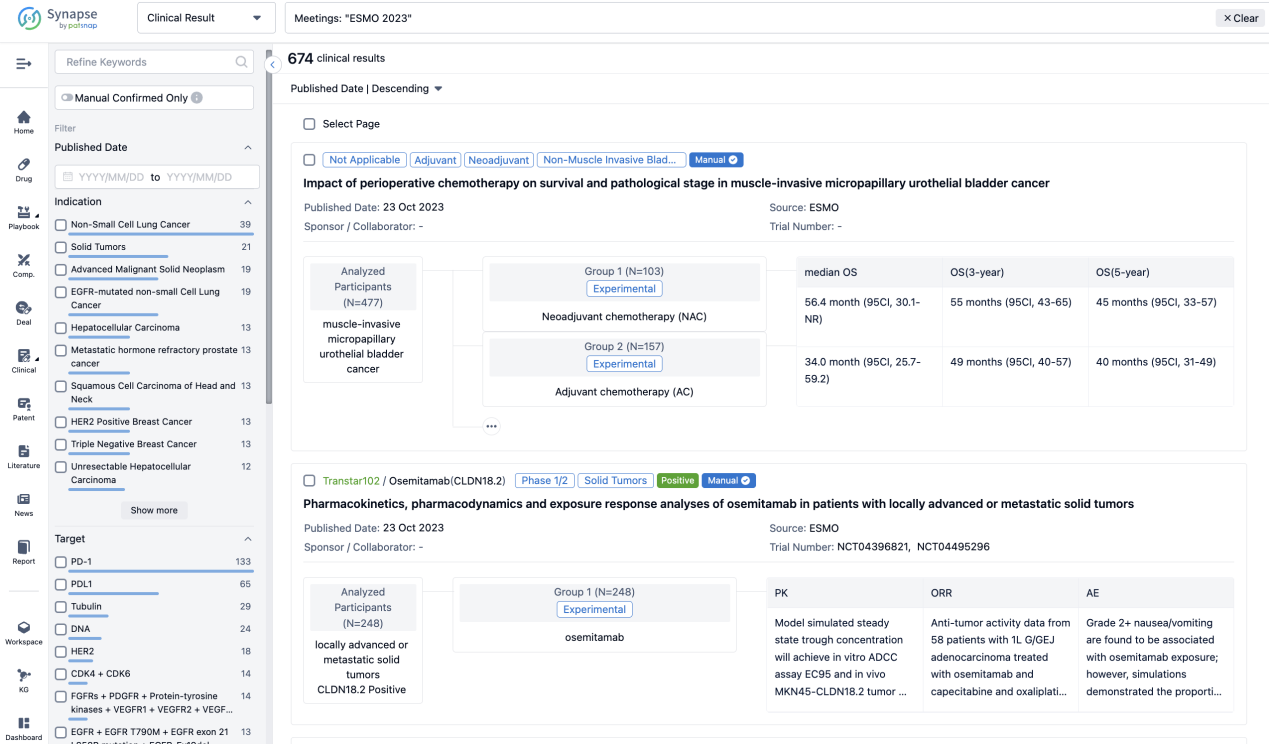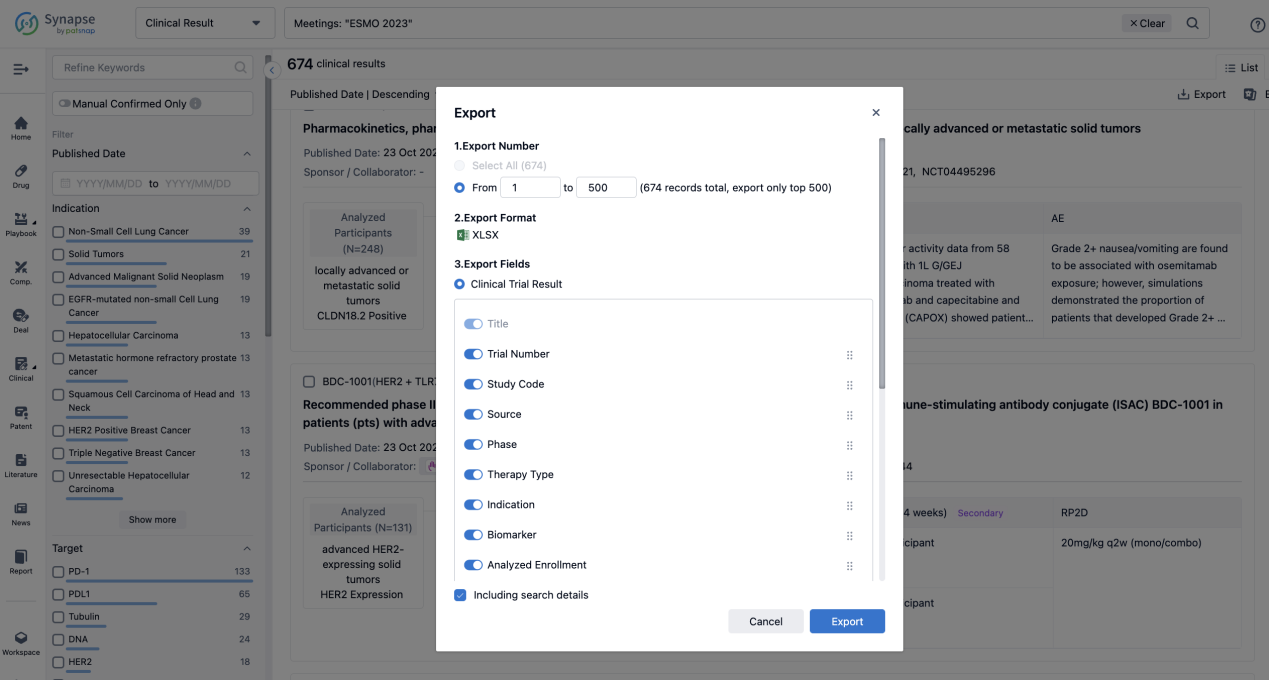Tislelizumab: brief review of its R&D progress and the clinical result in 2023 ESMO
At the ESMO Congress, pathological response to neoadjuvant tislelizumab (TIS) plus platinum-doublet (PtDb) chemotherapy (CT) in resectable stage II-IIIA NSCLC patients (pts) in the phase III (Ph3) RATIONALE-315 trial was reported, setting the stage for an in-depth discussion of its trial results.
Tislelizumab's R&D Progress
Tislelizumab is a monoclonal antibody drug that targets PD-1, a protein involved in regulating the immune system. It has been approved for use in various therapeutic areas, including neoplasms, respiratory diseases, endocrinology and metabolic disease, urogenital diseases, immune system diseases, digestive system disorders, eye diseases, hemic and lymphatic diseases, skin and musculoskeletal diseases, mouth and tooth diseases, and otorhinolaryngologic diseases.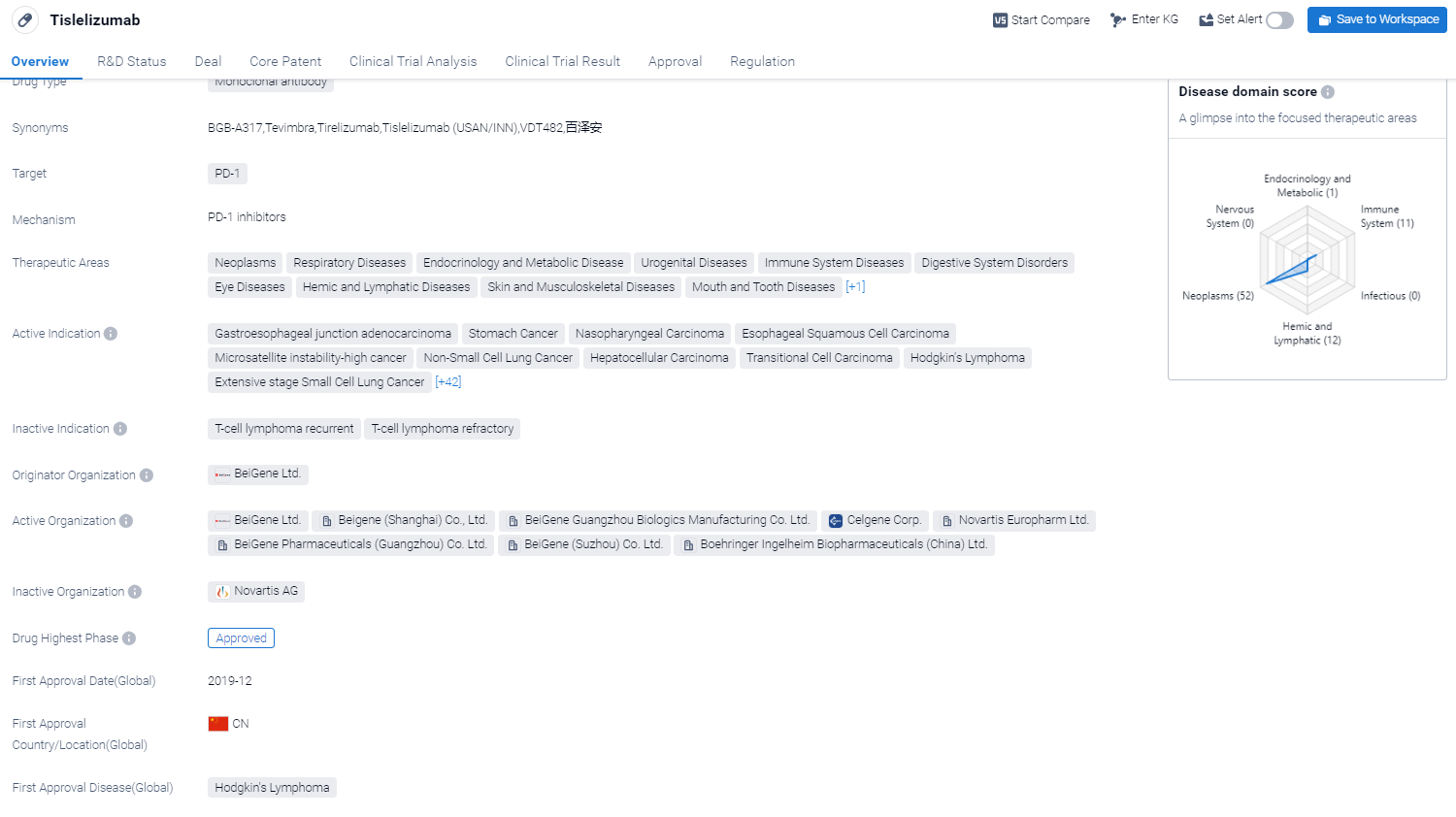
According to the Patsnap Synapse, Tislelizumab was developed by BeiGene Ltd. and has received approval in the global markets. It obtained its first approval in China in December 2019.. And the clinical trial areas for Tislelizumab are primarily in China and United States. The key indication is Non-Small Cell Lung Cancer.
Detailed Clinical Result of Tislelizumab
The randomized, parallel assignment, triple masking clinical trial (NCT043796354) was aimed to investigated the efficacy & safety of NA TIS (anti-PD-1 mAb) or placebo (PBO) + CT, then adj TIS or PBO, in pts with resectable stage II-IIIA NSCLC.
In this study, pts with treatment (tx)-naïve, resectable, confirmed squamous (sq) or non-sq (nsq) stage II-IIIA NSCLC who were eligible for PtDb CT, with ECOG PS ≤1 and no known EGFR mutation (nsq) or ALK gene translocation (sq & nsq) were enrolled. Pts stratified by histology, disease stage, and PD-L1 expression (≥1% vs <1%) were randomized (1:1) to 3-4 cycles of TIS 200 mg IV Q3W or PBO, plus PtDb CT, followed by surgery + 8 cycles of adj TIS 400 mg IV Q6W or PBO. Primary endpoints: MPR rate after completion of NA tx + EFS per RECIST v1.1 by blinded independent review committee (IRC). Key secondary endpoint: pCR rate.
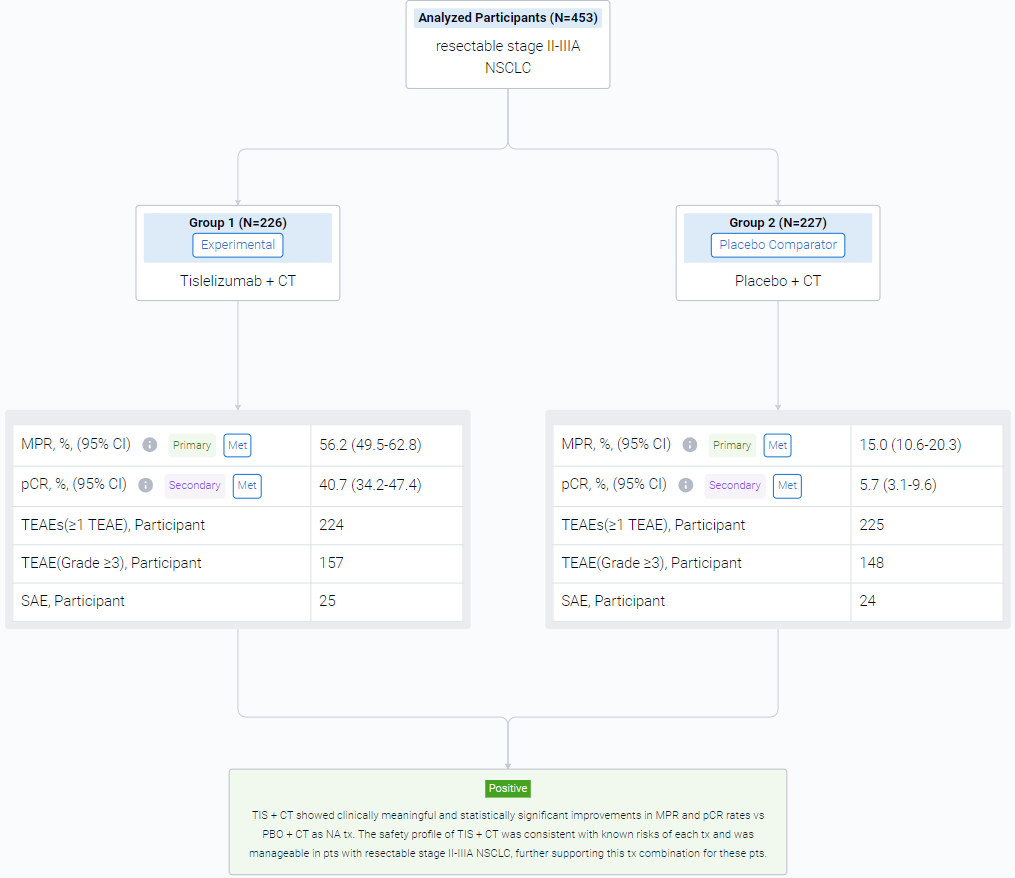
The result showed that in the ITT Analysis Set, there were 226 patients in the TIS+CT group and 227 in the CT group. The MPR rate in the TIS+CT group was 56.2% (95% CI: 49.5-62.8), while in the CT group it was 15.0% (95% CI: 10.6-20.3). The difference in MPR between the two groups was 41.1% (95% CI: 33.2-49.1), with a P value <0.0001. The pCR rate in the TIS+CT group was 40.7% (95% CI: 34.2-47.4), while in the CT group it was 5.7% (95% CI: 3.1-9.6). The difference in pCR between the two groups was 35.0% (95% CI: 27.9-42.1), with a P value <0.0001. There were 226 patients in the TIS + CT group and 226 in the CT group. In the TIS+CT group, 224 patients (99.1%) had at least one treatment-emergent adverse event (TEAE), of which 157 (69.5%) were grade ≥3 and 25 (11.1%) were serious. In the CT group, 225 patients (99.6%) had at least one TEAE, of which 148 (65.5%) were grade ≥3 and 24 (10.6%) were serious.
It can be concluded that TIS + CT showed clinically meaningful and statistically significant improvements in MPR and pCR rates vs PBO + CT as NA tx. The safety profile of TIS + CT was consistent with known risks of each tx and was manageable in pts with resectable stage II-IIIA NSCLC, further supporting this tx combination for these pts.
How to Easily View the Clinical Results Using Synapse Database?
If you want to know the other clinical results of popular conferences, please lick on the “Clinical Results” on the homepage of Patsnap Synapse, which provides multi-dimensional screening and filtering of drugs, indications, targets, companies, result evaluation, release date, popular conferences, etc. to help you quickly locate the data you need.
Select the clinical meeting you are interested in, such as ESMO. In the results, you can quickly locate the data you want to view by indication, phase and drug name.
A single result clearly shows important information such as registration number, phase, indication, Sponsor/Collaborator, biomarker, Trial number, dosing regimen and more.
If you would like to view more information about this result, you can go to the result detail page by clicking on the title.
Above the headings, we provide the original source of the outcome data. The basic information is supplemented with more information beyond the list, such as company, study. design, etc.

In the important Outcome Measures section, we provide both list and flowchart forms, which are convenient for you to overview the comparison group information and core indicator data.
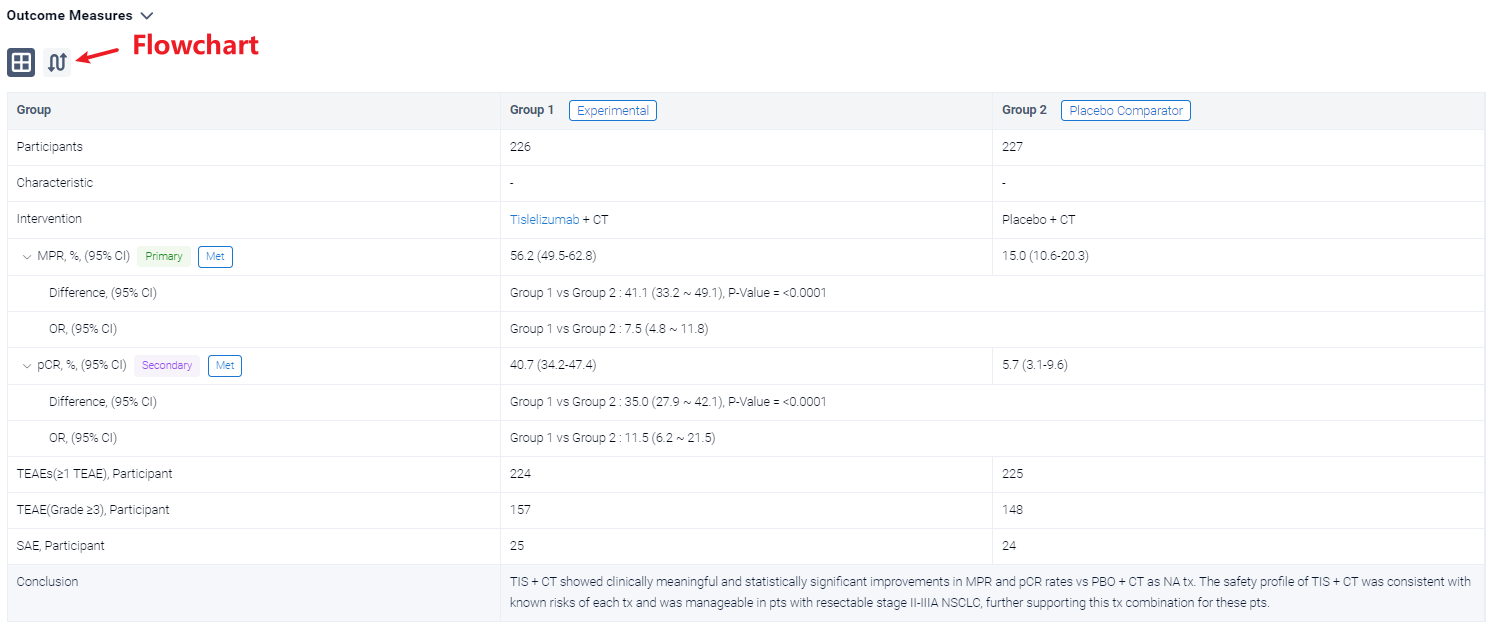
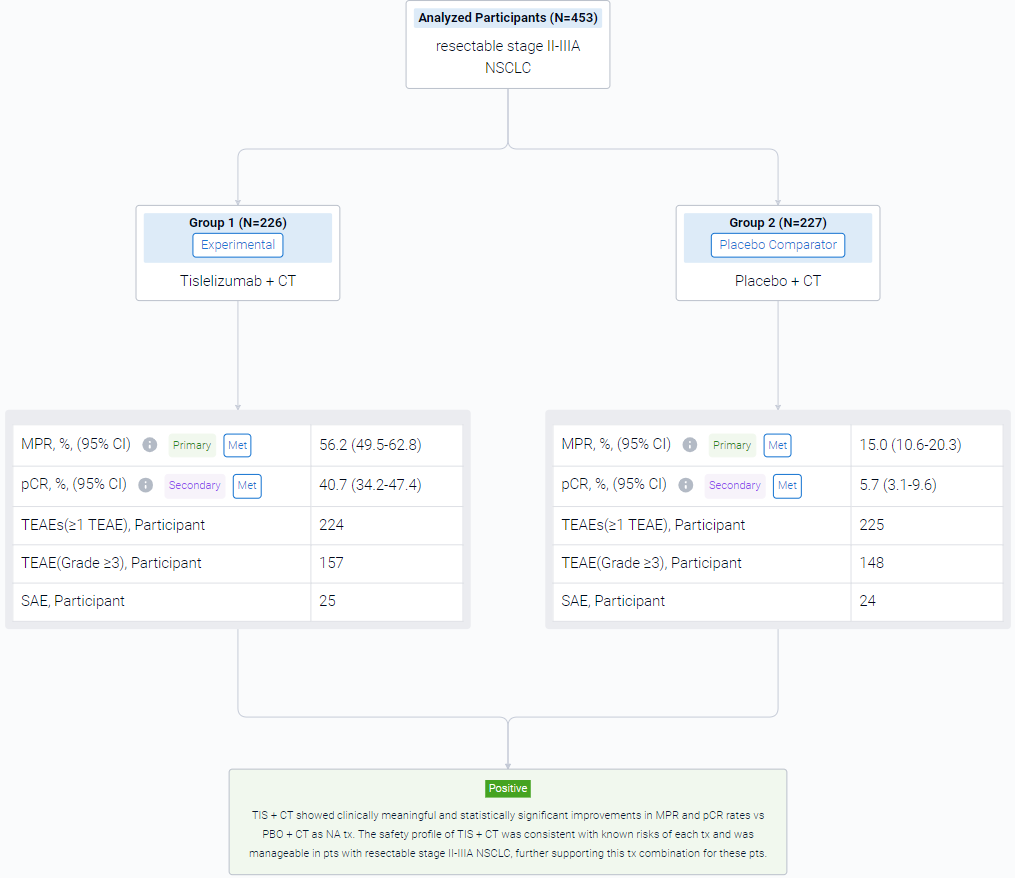
Finally, if you need to download these results, you can conveniently check the check boxes on the left side of the list, or directly click the "Export" button to download the data for personalized analysis and file sharing.
Click on the image below to embark on a brand new journey of drug discovery!

